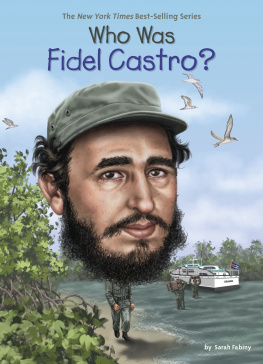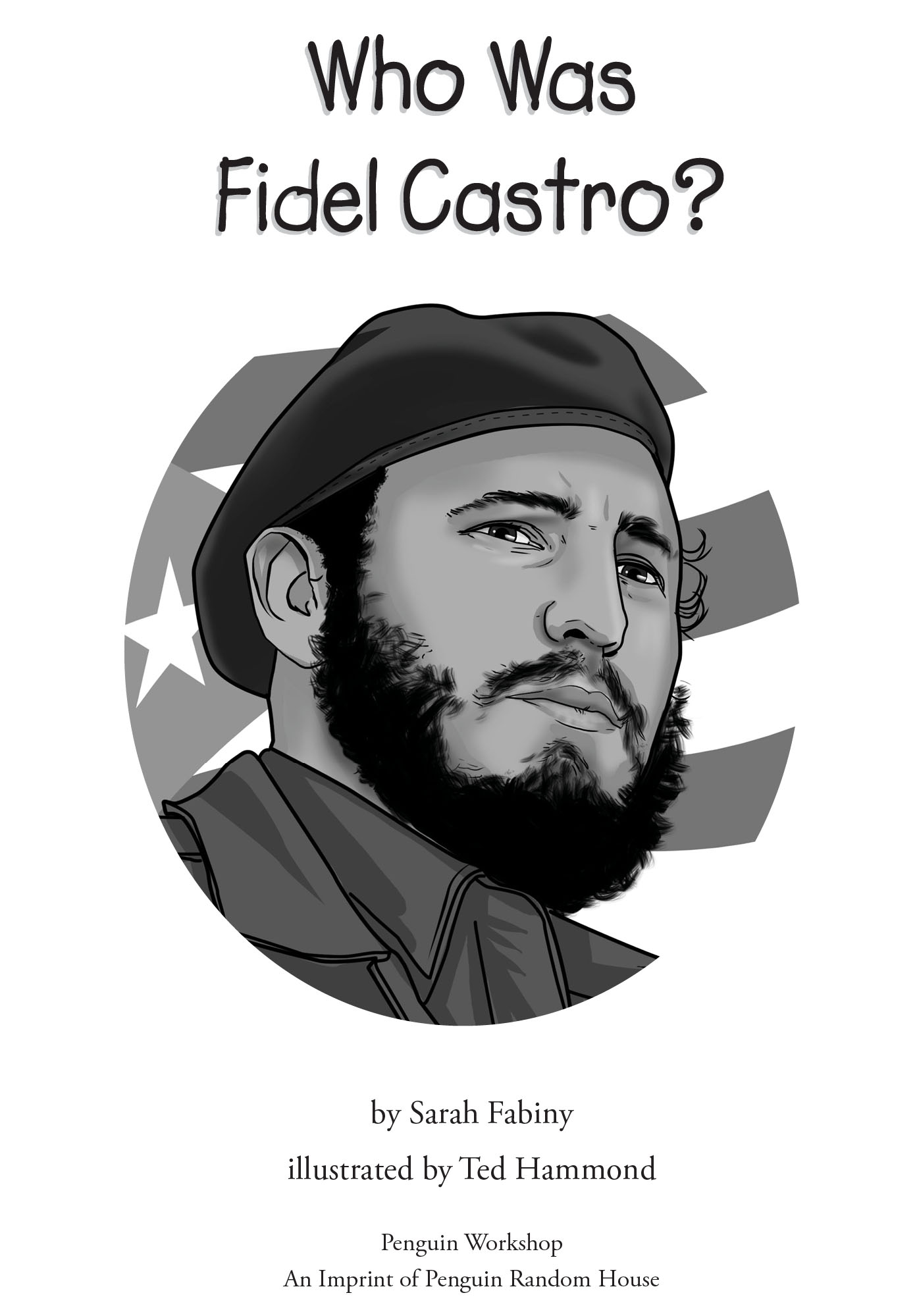Fidel! Fidel! Fidel! Hundreds of thousands of people gathered in the city of Havana, the capital of Cuba, were shouting for Fidel Castro. It was the evening of January 8, 1959. A week earlier, Fidel and his forces had overthrown President Batista and the government of Cuba. The crowds in Havana were waiting for their new leader to speak about his plans for the country. Cubans were ready for the freedom and changes that Fidel had promised them. The Cuban people were ready for a new leader.
Spotlights shone on the stage where Fidel was to speak. Fidel finally stepped up to the microphone. He had a big, bushy beard and was dressed in an army cap and olive-green army fatigues. The crowds cheered even louder when they saw Fidel.
Fidel spoke for two hours. He told everyone listening in Havana, across Cuba, and around the world that he was the new leader of the country. He would bring change to his beloved homeland.
As Fidel ended his speech, several white doves were released. One of the doves landed on Fidels shoulder. The crowd went silent. White doves were seen as a sign of peace. Many believed it was a sign from God. They believed that Fidel, who was only thirty-two years old at the time, had been specially chosen to lead Cuba.
CHAPTER 1
A Privileged Childhood
Fidel Castro was born on August 13, 1926. His father was named Angel. He was the owner of a sugar cane plantation. (A plantation is a very large farm that usually grows only one crop.) He had immigrated to Cuba from Spain in 1905. Fidels mother, Lina, was a housekeeper at the plantation. Fidel was Angel and Linas third child. After Fidel was born, the couple had four more children. Angel and Lina did not get married until Fidel was a teenager.
The sugar cane plantation where Fidel grew up was called Las Manacas. It was near the town of Biran. Biran is at the eastern end of Cuba. At the time, this area was among the poorest in Cuba. Most people lived in simple shacks without running water or electricity. They worked on small farms and plantations for hardly any money.
Fidels father had started out like this. But he was determined to make a better life for himself. Angel taught himself to read and write. He worked hard and saved money so that he could buy his own property. Angel was proud to be able to give his own family the things he did not have as a child.
The plantation grew to over twenty-five thousand acres. Three hundred families lived and worked on the property. Although Fidel was the owners son, he played with the children of the laborers who worked on the plantation. And workers often ate meals with Fidel and his family.
The History of Cuba
Today the island nation of Cuba has a population of about eleven million people. Native tribes called the Taino, Ciboney, and Guanahatabey lived in Cuba for thousands of years. They lived in small villages and hunted, fished, and grew crops such as sweet potatoes, corn, cotton, and tobacco. But this changed in 1492, when Christopher Columbus landed in Cuba. He claimed the island now belonged to Spain. The Spanish ruled Cuba for hundreds of years. Then, in 1895, Cubans fought a war against Spain and won independence in 1898. But the men who ruled Cuba after this were corrupt. They took bribes and cheated at elections. The last of these rulers was Fulgencio Batista. Fidel Castro overthrew him in 1959.
Fidel saw that his life was very different from the lives of the workers. The Castro children never worried about having enough to eat. They dressed in fine clothes and went to private schools. They rode horses, swam in the river, hunted, fished, and climbed in the nearby mountains.
Fidel spent a lot of time with his older brother Ramon and his younger brother Raul. The brothers were very close, especially Fidel and Raul. Raul looked up to Fidel, and Fidel always looked out for his younger brother.
From a very young age, Fidel had a stubborn streak and a strong temper. Although a bright boy, he had a hard time sitting still at school. Fidel argued with his teachers and fought with other students. He was always determined to get his own way.
When Fidel was about seven years old, his parents sent him to La Salle, a private Catholic boarding school. Ramon and Raul were also sent there. Their parents hoped that the boarding school would help their sons, especially Fidel, behave and be better students. But that did not happen. Fidel and his brothers did very little work and did not get good grades.
At the end of Fidels fourth-grade year, Angel brought his sons home. He refused to send them back to school. Although Fidel didnt like school, he didnt want to be stuck at home. In fact, he threatened to burn down the family house! So Fidels father gave in. But he decided to send Fidel to an even stricter school.


























